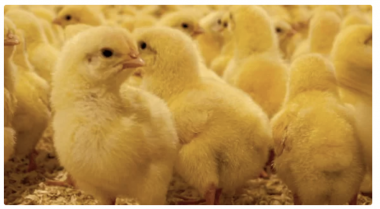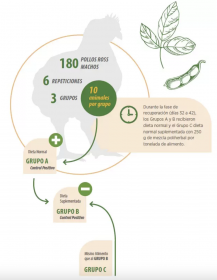The liver has a key role as the center of a series of metabolic and productive activities. Its level of activity will be directly proportional to the level at which the metabolism works.
Available in other languages:
Content available at:
Español (Spanish)
The liver is the organ with higher vital functions for the animal organism, from which three of them are the most relevant:
DETOXIFICATION
It acts as a filter that processes and removes toxins from waste produced by the metabolism itself, toxins and harmful chemicals from the environment, and microorganisms eliminated by Kupffer cells.
STORAGE
It is the body’s primary energy storage organ due to the high glycogen levels (a source of carbohydrates) and fat-soluble vitamins (A, D, E, K) that it is capable of storing.
SYNTHESIS
It plays a significant role in the digestion and metabolization of nutrients (carbohydrates, lipids, and proteins) from the stimulation of bile acid synthesis.
The liver has a key role as the center of a series of metabolic and productive activities. Its level of activity will be directly proportional to the level at which the metabolism works.
This implies that during animal growth in intensive production systems, the liver is potentially exposed to damage caused by a wide variety of harmful substances derived from different metabolic processes (e.g., reactive oxygen species) and derived from other external to the body itself (xenobiotics).

Under these premises, the use of a hepatoprotective additive in feed has two fundamental objectives:
TYPES OF HEPATOPROTECTOR ADDITIVES AVAILABLE IN THE MARKET
Liver protectors work by defending the liver from toxins and stimulating its function, leading to improvements in health, growth, and production.
There are two different types on the market:
Both can be in liquid or powder form. Liquid liver protectants are added to drinking water. They are generally used for healing purposes since birds affected by liver problems tend to decrease significantly their feed intake, but their fluid intake does not.
In all other situations, when used for preventive purposes, powdered liver protectors are the most widely used because they are more profitable.
USE OF A POLYHERBAL MIXTURE AS A LIVER PROTECTOR
The Livoliv 250® polyherbal mixture’s hepatoprotective efficacy was evaluated in 180 male Ross chickens from a commercial farm. They were transported 20 days after birth to a specific house where they received different feeding programs.
The 180 animals were divided into 6 repetitions of 3 groups of 10 animals each:

At the end of the study, blood samples were obtained to evaluate the differences between treatments with respect to serum markers of liver inflammation; Aspartate transaminase (AST), and Alkaline phosphatase (ALP).
For the statistical study, an alpha of 5% was chosen.
The addition of oxidized soybean oil and high ferrous sulfate levels in the feed slightly reduced the growth performance but not significantly.
Supplementation with 250 g of polyherbal mixture per ton of feed significantly improved feed conversion ratio and body weight during the intoxication phase (days 20 to 31), indicating that this polyherbal mixture allows the liver to use the oil of oxidized soybeans as an energy source.
CONCLUSIONS
Optimizing the use of balanced feeds and increasing productivity are two of the most important aspects of the poultry industry.
Due to the importance of the liver has in digestion, absorption, and metabolization of nutrients, the use of liver protectors that stimulate its ability to eliminate harmful products, such as mycotoxins, heavy metals, pesticides, etc., is key.
Besides, carrying out adequate transport and the use of nutrients to guarantee an adequate recovery of the diet will improve the feed conversion index, development efficiency, and production performance. It will maximize the investment return made in the food.
Subscribe now to the poultry technical magazine
AUTHORS

Layer Longevity Starts at Rearing
H&N Technical Team
The Strategy for a Proper Infectious Bronchitis Control
Ceva Technical Team
Elevate Hatchery Performance with Petersime’s New Data-Driven Incubation Support Service
Petersime Technical Team
Maize and Soybean Meal Demand and Supply Situation in Indian Poultry Industry
Ricky Thaper
Production of Formed Injected Smoked Chicken Ham
Leonardo Ortiz Escoto
Antimicrobial Resistance in the Poultry Food Chain and Novel Strategies of Bacterial Control
Edgar O. Oviedo-Rondón
GREG TYLER INTERVIEW
Greg Tyler
Insights from the Inaugural US-RSPE Framework Report
Elena Myhre
Newcastle Disease: Knowing the Virus Better to Make the Best Control Decisions. Part II
Eliana Icochea D’Arrigo
Avian Pathogenic E. coli (APEC): Serotypes and Virulence
Cecilia Rosario Cortés
The Importance of Staff Training on Animal Welfare Issues in Poultry Industry
M. Verónica Jiménez Grez
Rodent Control is a Key Factor in Poultry Biosecurity and Sustainability
Edgar O. Oviedo-Rondón